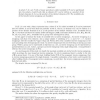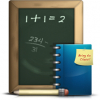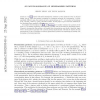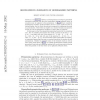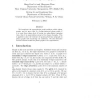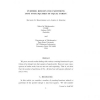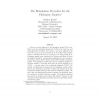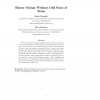ARSCOM
2005
14 years 6 months ago
2005
A subset U of a set S with a binary operation is called avoidable if S can be partitioned into two subsets A and B such that no element of U can be written as a product of two dis...
ARSCOM
2005
14 years 6 months ago
2005
For each integer m 1, consider the graph Gm whose vertex set is the set N = {0, 1, 2, . . . } of natural numbers and whose edges are the pairs xy with y = x + m or y = x - m or y...
ARSCOM
2005
14 years 6 months ago
2005
In [Kit1] Kitaev discussed simultaneous avoidance of two 3-patterns with no internal dashes, that is, where the patterns correspond to contiguous subwords in a permutation. In thre...
ARSCOM
2005
14 years 6 months ago
2005
In [BabStein] Babson and Steingr
ARSCOM
2005
14 years 6 months ago
2005
We investigate the supereulerian graph problems within planar graphs, and we prove that if a 2-edge-connected planar graph G is at most three edges short of having two edge-disjoi...
ARSCOM
2005
14 years 6 months ago
2005
We prove several results dealing with various counting functions for partitions of an integer into four squares of equal parity. Some are easy consequences of earlier work, but tw...
ARSCOM
2005
14 years 6 months ago
2005
ARSCOM
2005
14 years 6 months ago
2005
A class of graphs called generalized ladder graphs is defined. A sufficient condition for pairs of these graphs to be chromatically equivalent is proven. In addition a formula for...
ARSCOM
2005
14 years 6 months ago
2005
We look at binary strings of length n which contain no odd run of zeros and express the total number of such strings, the number of zeros, the number of ones, the total number of ...
ARSCOM
2005
14 years 6 months ago
2005
